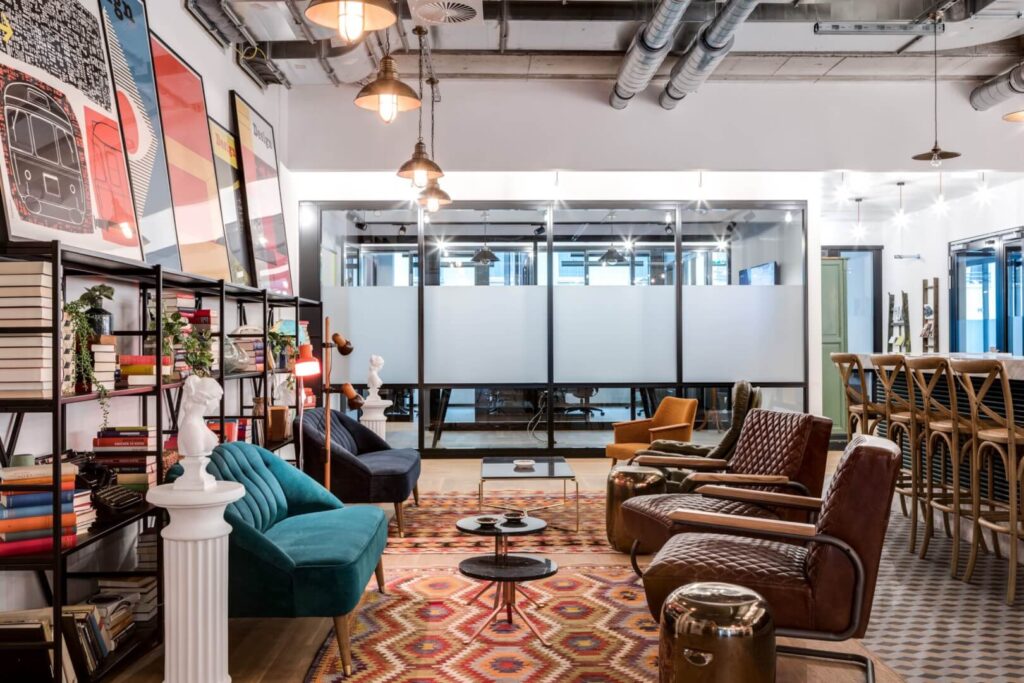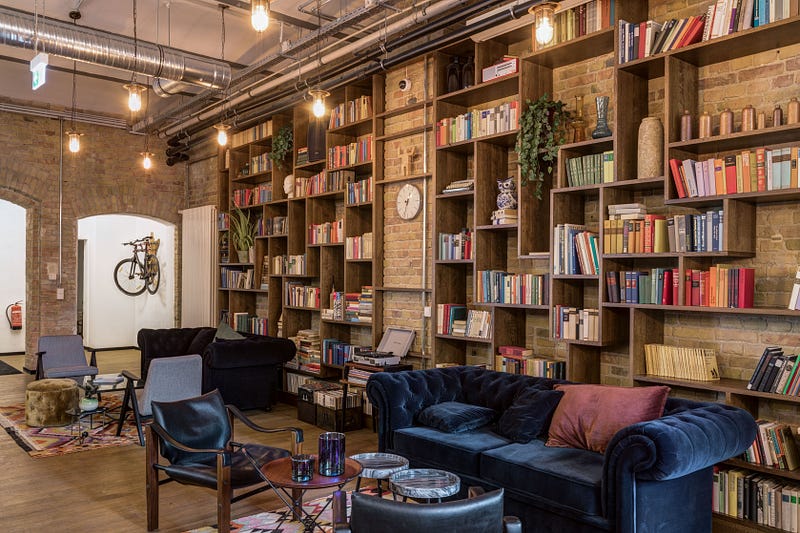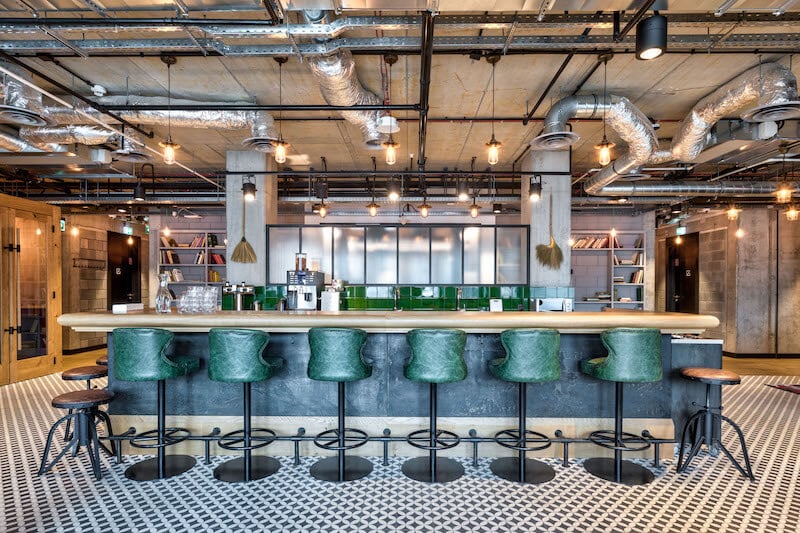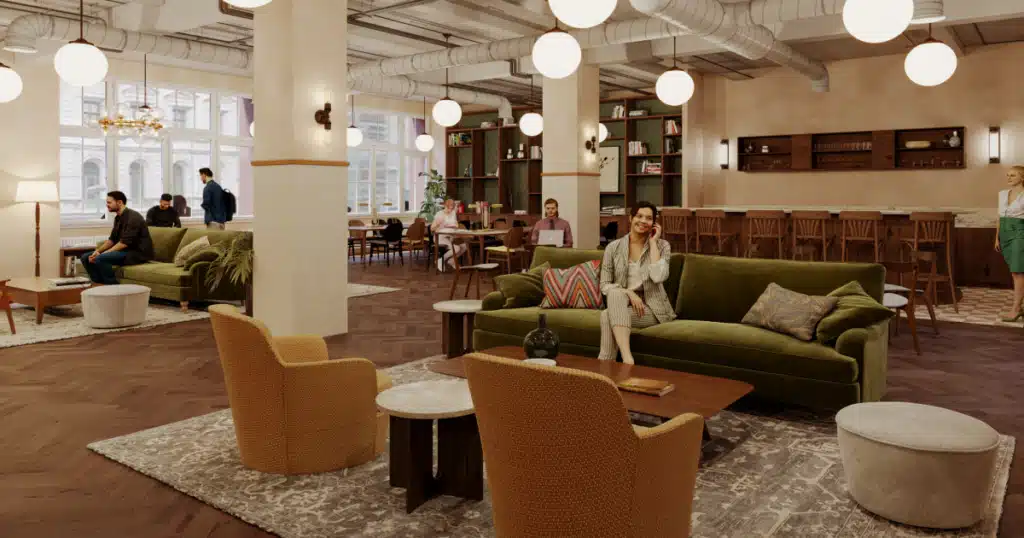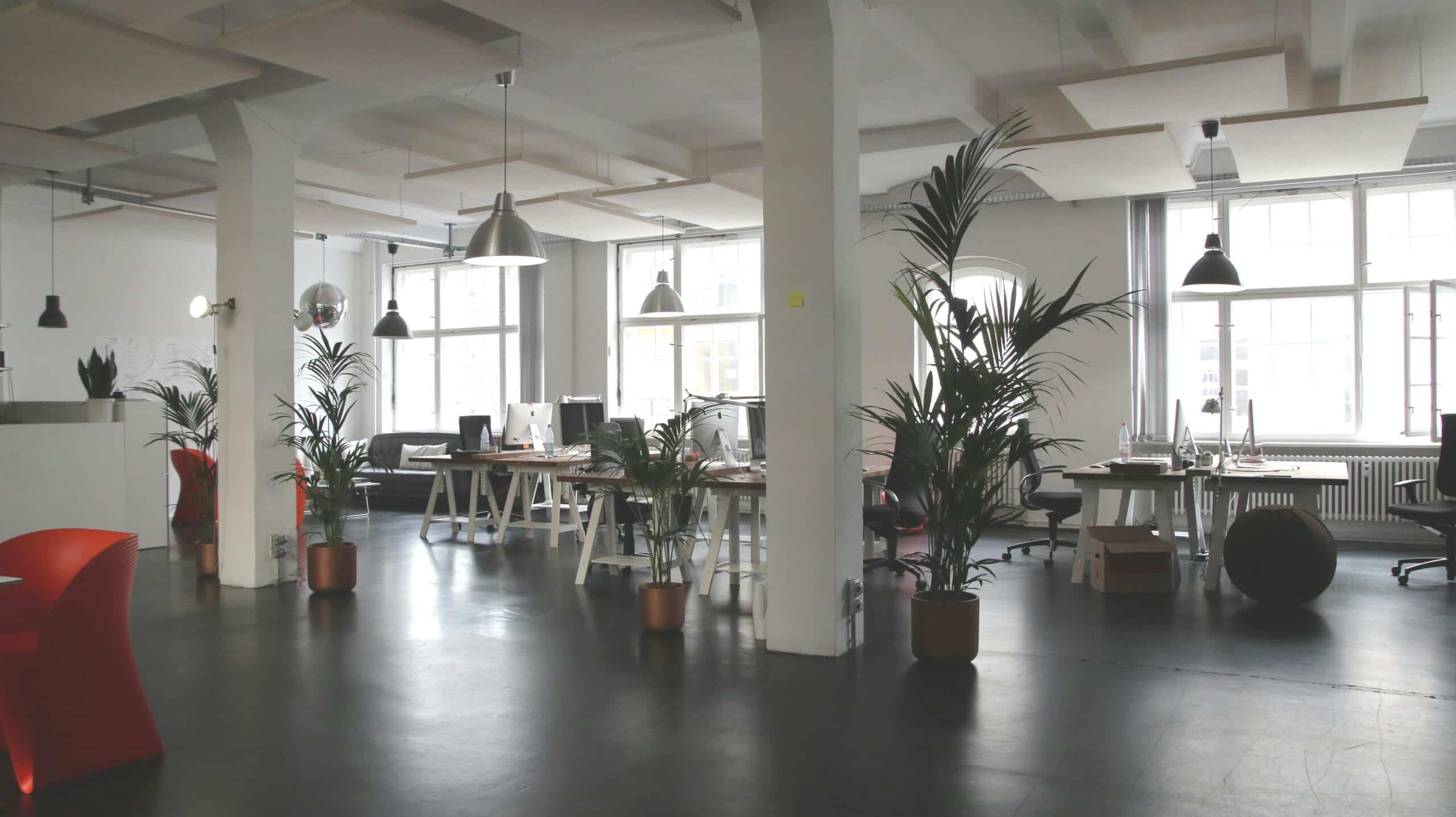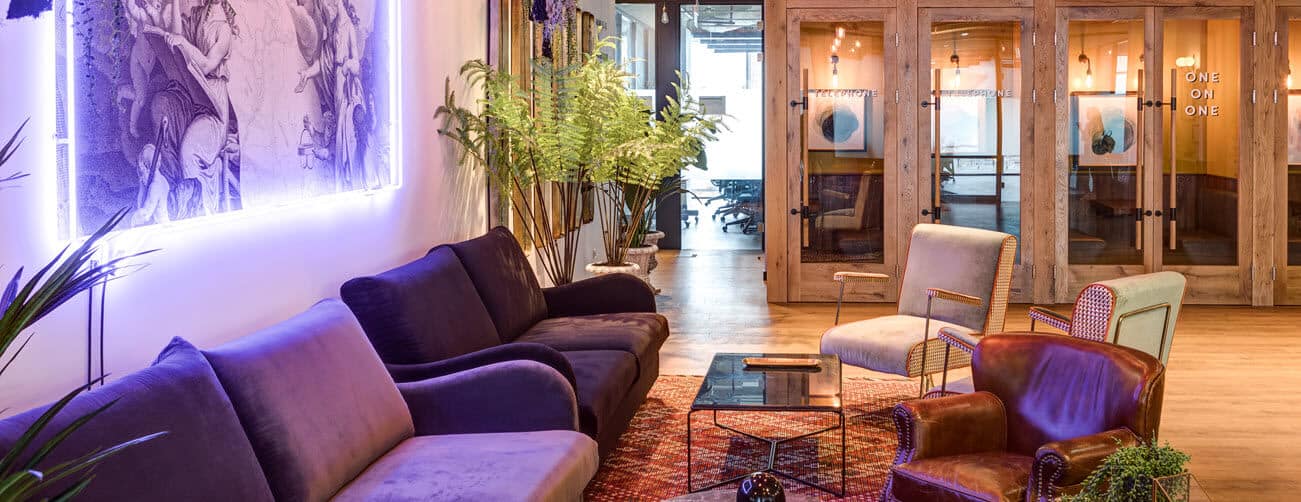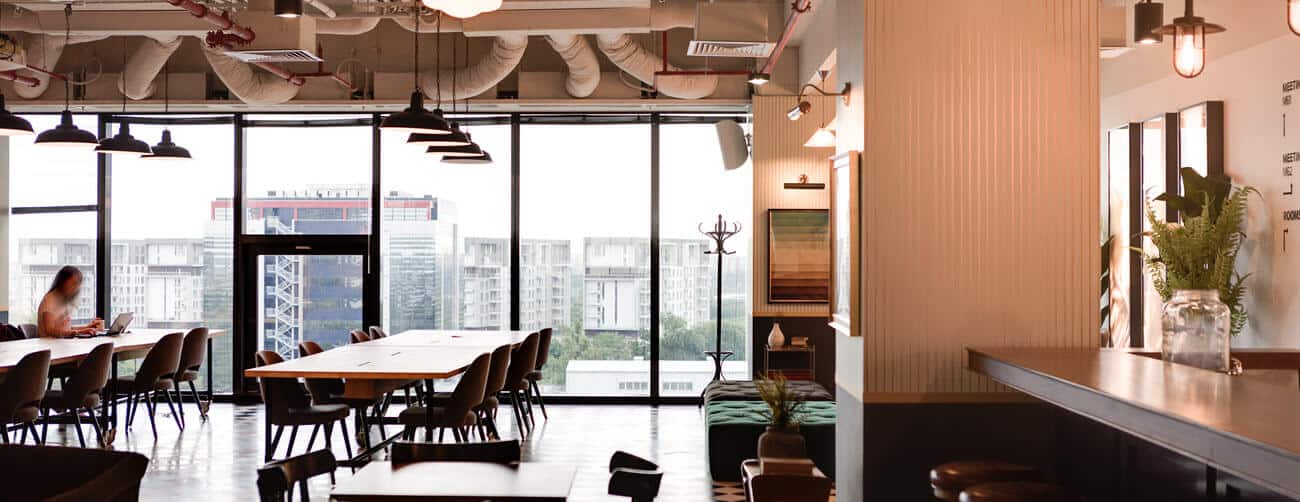
Coworking Trends: Future of Flexible Workspaces in 2025 and Beyond
The appetite for coworking spaces is growing. Since the term was first coined in 1999, flexible workspaces have been on the rise, proving particularly popular with tech startups and the creative industries. Offering an eco-friendly and affordable alternative to standard offices, coworking spaces are generally considered the future of work, especially as companies search for more flexible alternatives.
The shared workspace sector is ever-changing, with development being driven by technological change, new working models, and coworking design innovations. Below, we’ll take a closer look at the coworking trends driving the market forward in 2025 and beyond.
Hyper-Local and Niche Coworking Spaces
If you’re looking to cut out the commute, hyper-local coworking spaces make an ideal base of operations. One of the most exciting coworking trends to look out for in 2025, these flexible workspaces are located in suburban areas and residential neighborhoods, rather than city centers and central business districts. Nonetheless, they offer all the same perks as a standard coworking space including access to first-rate amenities, making them the obvious choice if you’re searching for a local alternative.
Niche coworking spaces are also on the rise. Unlike open-plan shared workspaces that cater to a broad demographic, these locations are geared toward specific professions and industry sectors. All the standard coworking facilities are on offer here, but you’ll also benefit from access to premium equipment and specialist amenities.
Hybrid Work Models
Generally considered the future of work, the hybrid work model brings together traditional on-site employees with the benefits of remote work. Ideal if you’re thinking about a more flexible workspace, hybrid working is a cost-effective approach for employers, while individuals benefit from a healthier work-life balance.
There are many different types of hybrid work models, but most of them fall into one of several key categories. With a remote-first model, the focus is on remote working. Offering plenty of flexibility for employees, the vast majority of work is carried out online. While there are obvious benefits for the individual, remote-first working can lead to communication issues and impede productivity.
Alternatively, there’s the office-first approach. Here, in-person collaboration is encouraged, with employees allowed to work remotely on certain days. While busy schedules can impact work-life balance, this hybrid model improves communication and allows for more collaboration.
Other hybrid solutions include the team-based model, with a workforce split into teams that alternate between in-office and remote work, while the flexible model grants employees the option to choose how they work on an ad hoc basis. Perfect if you’re looking to embrace agile working.
Technological Advancements Transforming Coworking Spaces
New technologies are reshaping the workplace. The era of the smart office is finally here, with the Internet of Things (IoT) allowing for more interconnectivity than ever before. Even the most modest flexible office space is set to benefit from IoT advancements, with smart office systems making it easier to monitor and manage coworking locations. For space providers, this means better utilization and fewer wasted resources, while increased accessibility to essential tech brings productivity boosts for employees.
The rise of AI is also redefining shared workspaces. AI is already making workplaces smarter than ever, with essential systems largely automated. This same automation is creating more responsive spaces in which to work, with hardware and appliances providing tailored responses to the individual.
Design Environments
Innovative office design is at the heart of coworking spaces. The best spaces are carefully considered to increase productivity, foster collaboration, and promote a sense of well-being.
One trend to look out for in 2025 is an increase in the number of coworking locations with zoned spaces. Alongside open-plan arrangements, expect to see more areas designated for individual work and team-based collaboration, alongside communal spaces reserved for breakout sessions and relaxation.
When it comes to design trends for productive coworking environments, private spaces are likely to become a firm fixture. Open-plan locations are giving way to shared spaces with more autonomous areas, with the likes of quiet pods allowing for greater focus.
The biophilic interior design trend is also set to dominate coworking spaces this year and beyond. Already a long-standing staple of many shared workspaces, this design approach brings many health and wellness benefits, making optimal use of natural light and integrating green spaces. Alongside the perks for space users, biophilic design can also help coworking venues operate more sustainably.
We’ve already touched upon how artificial intelligence has redefined the smart office. However, AI is also likely to become interwoven with office interior design. AI-enabled systems will not only be able to automate desk and amenities reservations but also take charge of things like HVA|C control. Things like lighting can be personalized for maximum productivity, while automated heating systems can reduce carbon footprints and make spaces more eco-friendly.
Going forward, expect shared workspaces to include more communal areas. Although private spaces are on the rise, an increase in communal spaces will encourage collaboration and a sense of community. This is an obvious win for freelancers looking to connect with other professionals or smaller businesses keen to engage with other companies.
The Coworking Business Model: Adapting to Changing Demands
Traditional office spaces aren’t just outdated, they’re relatively expensive. Thankfully, the coworking model provides a flexible alternative to rigid leases, while offering budget-friendly access to premium amenities.
Flexible Membership Options and Pricing Models
If you’re not keen on the idea of strapping yourself to an extended lease, coworking spaces are an obvious choice. Flexibility is key to the coworking model, with a range of membership options and pricing models to choose from. Individuals can access facilities as and when required with day passes, while businesses can choose rolling monthly contracts to utilize the spaces and services they need to grow.
Hot Desks and Dedicated Desks
Hot desks have long been a hallmark of coworking spaces. Offering a cost-effective solution for individuals, users can access hot desks as and when required, without the need for reservations. Of course, this flexible approach isn’t for everyone. For those that require a little more familiarity, there are dedicated desks. Otherwise known as hoteling, users pay for regular access to the same workstation and office facilities, only at a fraction of the cost of conventional office space.
Private Offices and Meeting Rooms
Hot desks and hotelling are worth considering if you’re a freelancer or a very small business, but larger operations will require something more substantial. Private offices are a handy solution, allowing fledgling businesses and startups the chance to scale while enjoying access to all the amenities they need.
Sustainability and ESG Compliance
The carbon footprint of office work can be considerable. According to some estimates, office working accounts for 3.5 kilograms of CO2 emissions per person every day. If you’re keen to curb your carbon footprint, making use of a coworking space can help you contribute toward a greener future. This is because many shared workspace providers adhere to environmental, social, and governance (ESG) frameworks.
This broad set of standards can help companies operate more sustainably, with environmental criteria providing guidance on how to manage waste and pollution, as well as conserve resources. Meanwhile, social criteria look at how businesses relate to their employees and customers, as well as their impact on local communities. Finally, governance criteria cover risk management and internal control measures, as well as how a company generally conducts itself.
This framework is incredibly useful for companies looking to establish themselves as green-friendly operations. While it can be hard for individuals, smaller companies, and startups to fulfill ESG requirements, shared workspaces are far better positioned to make active changes that benefit the environment.
Hospitality and Community Building
Another trend that’s set to dominate coworking spaces going forward is an increasing focus on hospitality. Striking the right chord with clients is vital to business success, but making the right impression can be difficult and expensive. By choosing a shared workspace with hospitality services like gourmet catering, it’s easier than ever to wow clients without breaking the bank.
Community building is also central to shared workspaces. First-rate meeting spaces allow facility users to come together and forge a sense of community, while exclusive member-only events set the stage for networking. Invaluable for up-and-coming creatives or independent freelancers looking for lucrative business opportunities.
Market Growth and Demographics
The global coworking sector is enjoying significant growth. In 2025, the market was worth an estimated $27.6 billion. By 2030, the market is forecast to be worth more than $36 billion. But what’s driving the growth of the coworking spaces market?
In short, more companies than ever are embracing the shared office space model. Coworking spaces are particularly popular with the tech, creative, and consulting sectors, with many self-employed professionals choosing shared workspaces over traditional office setups. They’re also the go-to choice for startups, offering an affordable alternative to office space and scalable solutions. In fact, some of the most successful startups of all time began operations in coworking locations, with the likes of Uber and Instagram both beginning in life in such spaces.
Then you have established companies that are transferring a significant slice of their operations to shared workspaces. International heavyweights like Coca-Cola, Samsung, and HSBC have all shifted focus to coworking spaces in recent years in an effort to reduce expenses and reduce their environmental impact. However, freelance professionals are by far the biggest demographic utilizing coworking spaces, with around 40% of all desks utilized by them. They’re particularly popular with Millenials and Gen Z workers, making up the majority of coworking space users.
Retreat Spaces and Bookending Incentives
While central locations and convenient travel connections make coworking spaces an attractive prospect, there are alternative shared workspace models out there. Retreat spaces are becoming increasingly popular for professionals keen to get away from the hustle and bustle and combine business with pleasure. Set apart from busy city living, these luxury spaces offer five-star amenities and the kind of facilities usually reserved for spa retreats.
Find the Perfect Flexible Workspace with Mindspace
Eager to embrace the coworking trend? Whether you’re looking for a freelancer-friendly shared workspace or a startup searching for its next base of operations, Mindspace can help. We offer an unbeatable selection of superior shared workspace locations in some of the most desirable locations in the world. Take your pick from fully-equipped coworking venues located in the heart of town or take a break from it all with retreat-style spaces set amidst picturesque surroundings.
Looking for flexible access to first-rate coworking spaces? Take your pick from a range of membership options, including on-demand access to desks and essential office amenities and all-inclusive private office solutions. Whatever type of coworking space you’re looking for, Mindspace will help you find the perfect match.
Ready to find your next coworking space? Why not book a tour of one of our locations today?


